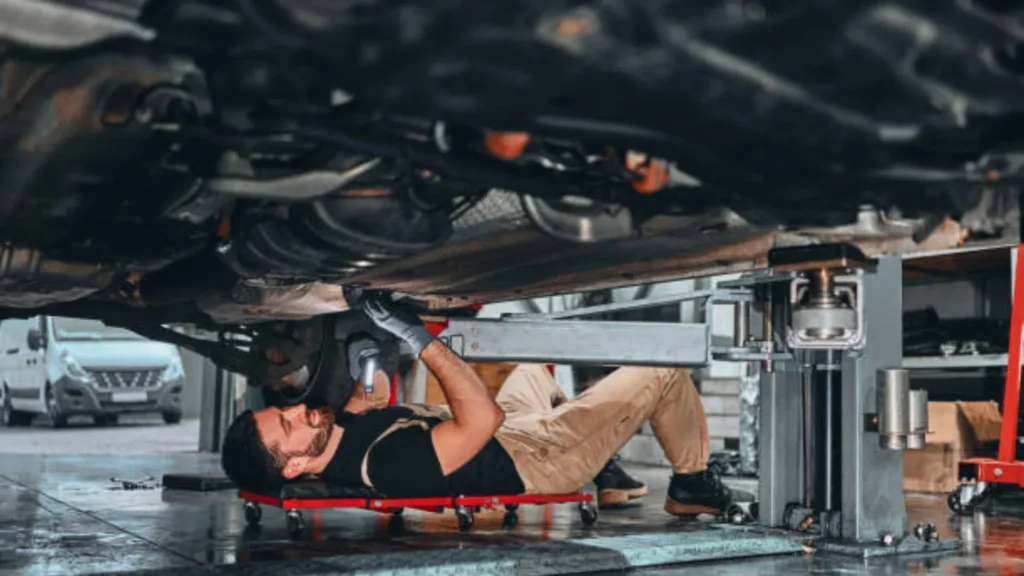Master essential tips for maintaining your new car, from routine oil changes to understanding features, ensuring it stays in top condition.
Table of Contents
How to Maintain Your New Car Latest Guide
Getting a new car is exciting! It’s not just a mode of transportation; it’s a commitment. To keep your new ride in tip-top shape, you’ll need to stay on top of maintenance. This guide will walk you through everything you need to know to maintain your new car, ensuring it stays reliable and looking fantastic for years to come.

Understanding Your New Car
Every new car comes with its own set of features and technology, and understanding these can significantly enhance your ownership experience.
Features and Technology
Modern cars come packed with advanced features like infotainment systems, GPS, and safety technology. Familiarize yourself with these to maximize convenience and safety. Spend some time going through the owner’s manual, and don’t hesitate to explore settings to tailor your car’s features to your liking.
Warranty and Service Plans
Most new cars come with warranties and service plans. Understand what’s covered and the recommended service intervals. This knowledge can save you money and headaches down the road. Keep all documentation in a designated spot so you can easily refer back to it when needed.
Routine Maintenance
Regular maintenance is key to keeping your car running smoothly. Here’s what you need to focus on:
Regular Oil Changes
Oil is the lifeblood of your engine. Regular oil changes ensure that your engine runs smoothly and efficiently. Follow the manufacturer’s recommendations for frequency, typically every 5,000 to 7,500 miles, but always check your owner’s manual for specifics.
Tire Care
Tires are your car’s only contact with the road, making their care essential.
Tire Pressure
Keeping your tires inflated to the recommended pressure improves fuel efficiency and extends tire life. Check your tire pressure monthly, especially before long trips. If you notice any fluctuation, it’s crucial to address it.
Tread Depth
Tread depth affects traction and safety. Use the penny test: insert a penny into the tread with Lincoln’s head down; if you see all of his head, it’s time for new tires. Regularly inspecting tread wear helps ensure safe handling on the road.
Keeping the Exterior in Shape
A well-maintained exterior not only looks great but also protects your investment.
Washing and Waxing
Regular washing removes dirt and grime that can cause rust and corrosion. Waxing every few months adds a protective layer, keeping your paint shiny and new. Make it a routine to wash your car every two weeks, or more often if you live in a dusty area.
Dealing with Scratches and Dents
Life happens, and scratches or dents may occur. Address these promptly to prevent rust and further damage. There are DIY kits for minor fixes, or you can visit a professional. Taking care of these issues early can prevent more costly repairs down the line.
Interior Care
Maintaining the interior of your car is just as important as the exterior. Here’s how to keep it fresh:
Cleaning Upholstery
Regularly vacuum and clean your seats. Use upholstery cleaners or consult a professional for tough stains. If you have leather seats, consider conditioning them to keep them supple and prevent cracking.
Dashboard and Controls
Wipe down your dashboard and controls with a microfiber cloth. This keeps them looking new and functional. Avoid using harsh chemicals, as they can damage sensitive materials.
Monitoring Fluid Levels
Regularly checking your fluid levels is essential to your car’s health.
Engine Coolant
Ensure your engine coolant is at the proper level to prevent overheating. If it looks dirty, consider a flush. Check your owner’s manual for the specific type of coolant recommended for your vehicle.
Brake Fluid
Low brake fluid can indicate a problem. Check the level regularly, and top it up if necessary. If you notice a decrease, it’s time for a professional inspection. Proper brake function is crucial for your safety.
Checking Battery Health
A healthy battery is crucial for a reliable start. Keep an eye on the terminals for corrosion and ensure they’re tight. Regularly check the battery’s charge, especially before winter. If your car struggles to start or the lights dim, it may be time for a replacement.
Conclusion
Maintaining your new car doesn’t have to be overwhelming. By following these simple steps, you can enjoy your vehicle while ensuring it remains in excellent condition. Remember, regular care and attention will save you time, money, and stress in the long run. Happy driving!
FAQs
How often should I service my car?
It’s typically recommended to service your car every 5,000 to 7,500 miles, but always check your owner’s manual for specific guidelines.
What are the signs of tire wear?
Look for uneven tread, bald spots, or visible damage. If you notice any of these, it’s time for a tire check.
Can I wash my car too often?
Washing your car too often won’t harm it, but using harsh chemicals can damage the paint. Aim for regular washes with gentle soap.
How do I know if my battery needs replacement?
Signs include dim headlights, slow starting, and corrosion around the terminals. If you notice these, it’s wise to have it checked.
Is it necessary to use premium fuel?
Unless your car’s manual specifically requires it, regular fuel is usually sufficient. Premium fuel won’t hurt, but it may not provide significant benefits.

